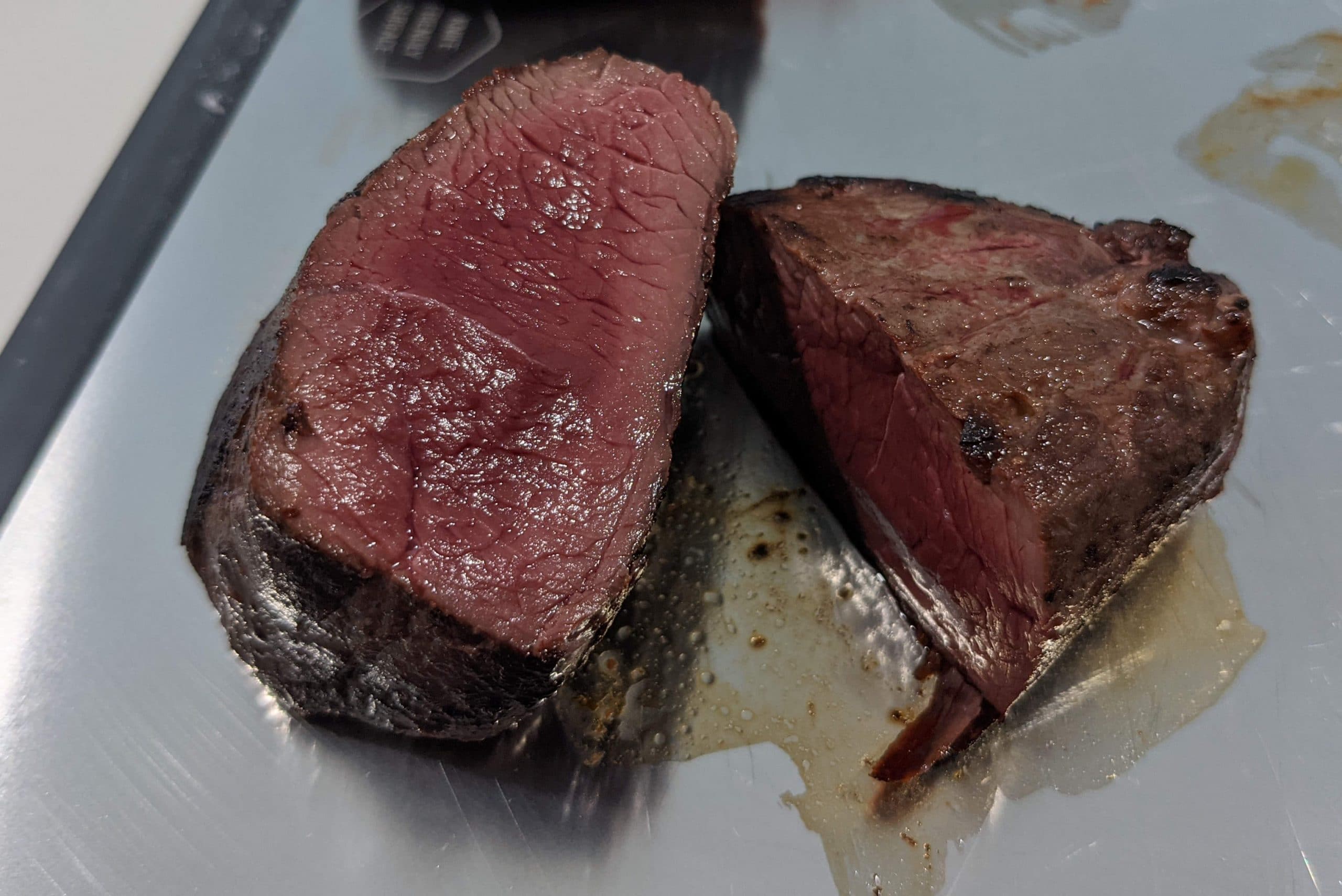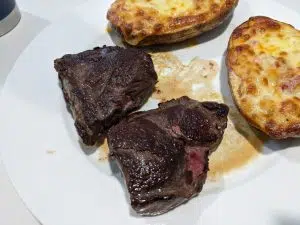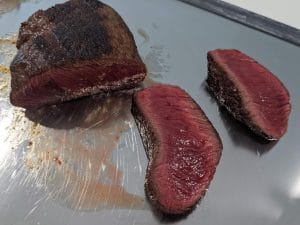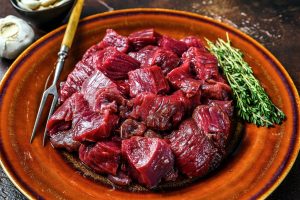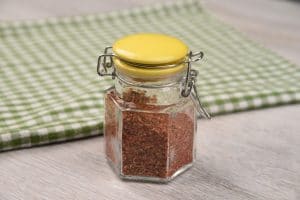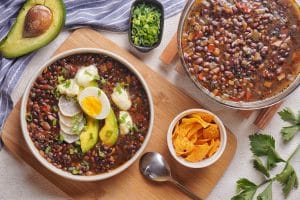All About Ostrich Meat
Important Note: When you buy through our links, we may earn a commission. As an Amazon Associate we earn from qualifying purchases. Content, pricing, offers and availability are subject to change at any time - more info.
The meat industry is a constantly changing marketplace and often welcomes surprising new options every once in a while. For example, ostrich meat has become one of the most popular and high-selling alternative meat options. But why? It probably seems strange to many people, but this meat is incredibly healthy, tasty, and sustainable. Here’s what you need to know about this fantastic protein source.
- Ostrich Meat Legality
- How Does It Taste?
- The Health Benefits of Ostrich Meat
- The Average Ostrich Diet
- Ostrich Meat Sustainability
- Where to Buy Ostrich Meat
- Common Cuts and Costs
- Cooking Ostrich Meat
- How to Store Ostrich Meat
Ostrich Meat Legality
If you’re like the average person first learning about ostrich meat, you probably wonder about its legality. After all, not all meats are legal around the world. Currently, the United States does allow people to buy ostrich meat but only from particular sources. Buyers can only purchase ostrich steaks and other cuts directly from USDA-inspected and approved ostrich farms.
These American ostrich farms must pass complex inspection tests to ensure that each bird has enough space to roam free. These preparation facilities must also use humane feeding and killing methods, allowing these large and majestic birds the chance to thrive. The meat must also be edible and free of bacteria, maggots, and other problematic things.
Farm-grown ostrich meat is typically relatively lean, with a red look that may seem very similar to the leanest beef. However, Ostrich meat is naturally almost 100% fat-free because these birds have a unique fat distribution method that keeps them away from these steaks and filets. As a result, this red meat is one of the healthiest options on the market and is suitable for feeding animals and pets, like dogs.
How Does It Taste?
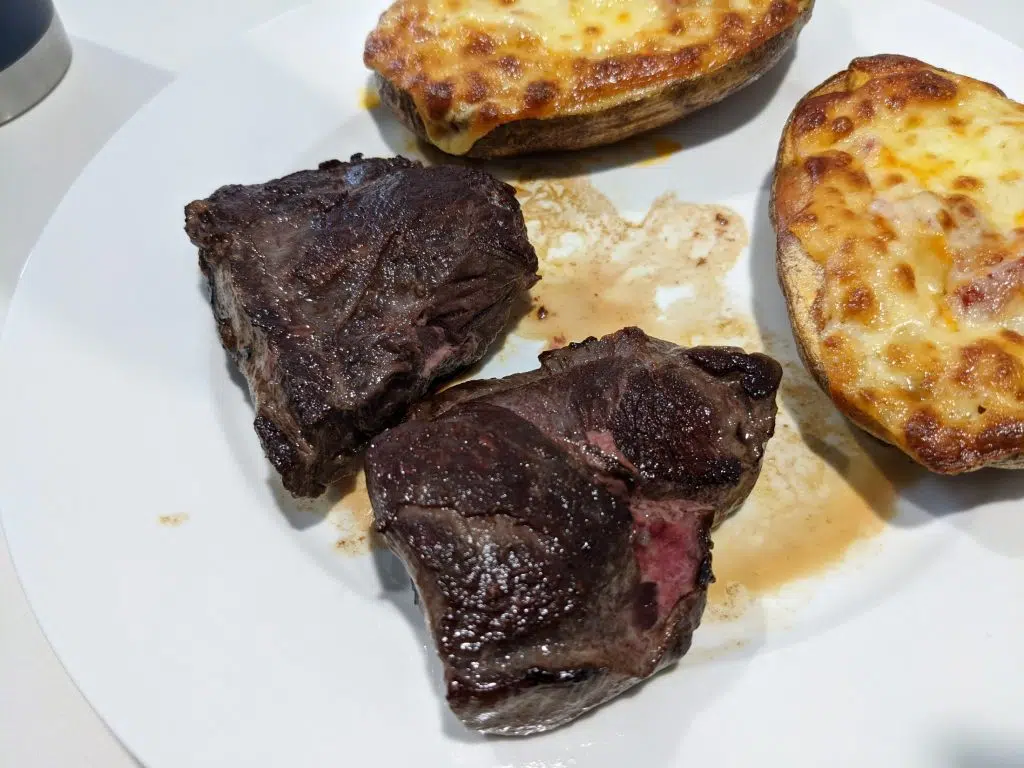
People who’ve eaten ostrich meat report that its taste and texture are pretty delicate. Most compare it to beef, as it is red meat. It is not often compared to chicken, even though both are birds. Surprisingly, there’s little to no gamey taste to this meat at all. Some have reported finding it somewhat bland, though this varies depending on a person’s taste and preference. Some like to season and marinate them before serving.
The best comparison we’ve found is to a grass-fed beef cut. It has the same blend of rich flavors and overtones familiar with these cuts. Those who mostly eat grain-fed beef (which is most beef sold in supermarkets and general stores) may find ostrich a little nuttier and richer. However, it has also been compared to low-fat game meats. Venison fans may find themselves loving ostrich meat’s texture.
As for the smell, it doesn’t have the kind of potent scent you might get from other protein meat. Instead, its aroma and flavor are closer to that grass-fed beef taste mentioned earlier. That’s because most ostrich farms will provide their birds with a high content of grass and minimal grain. This helps improve the taste and gives the meat a relatively mild smell that shouldn’t offend most people.
The Health Benefits of Ostrich Meat
Countries like South Africa and Germany have become obsessed with ostriches and their meat in recent years. And states like South Carolina have many farms where they grow these beautiful and delicious birds. That’s because they have researched the healthy nature of this creature and found its meat has many benefits available. Just a few health benefits include:
- Low-Fat Content – As mentioned previously, ostrich meat is naturally low in fat. As a result, it is one of the leanest and healthiest red meat options on the market today. People who want to eat red meat protein but who want to avoid beef burgers and their fat may love ostrich meat.
- Balanced Cholesterol – Unlike many red meats, which are terrible for your cholesterol count, ostrich meat is very low. As a result, it may be considered a great alternative option for those who love burgers and steak but who cannot eat them anymore.
- Low-Calorie Content – Ostrich meat is one of the lowest in calories available. It has just 123 calories per three-ounce serving. By comparison, even lean beef will have 213 calories per three-ounce serving. That’s a 500-calorie difference on a 15-ounce steak meal!
- Contains Many Vitamins and Minerals – Ostrich meat includes a high vitamin B12, B6, iron, and zinc level. Each of these vitamins and nutrients is also available in other red meats. However, the lower fat and calorie count makes ostrich meat naturally healthier for you.
And since ostrich meat has a similar texture and taste to beef, it can replace it in many recipes. For instance, you could eat ostrich instead of beef steaks or even make tacos or burgers with ostrich meat. The taste is so similar that most people probably won’t even realize that they’re eating an ostrich!
The Average Ostrich Diet
If you’re interested in a new meat option, like an ostrich, you need to know what kind of foods they eat. Diet plays a huge role not only in a meat’s healthiness but its overall taste. And the ostrich has a unique range of foods that it enjoys eating. Unfortunately, many farms will let these birds run wild to get many of these foods, though they also have pre-created meals designed to create delicious meat.
In the wild, ostriches are omnivores. This means that they’ll eat a combination of plant and animal life when necessary. However, it is fair to say that they are omnivores with a preference for plants. Most of the time, wild ostriches eat plants, seeds, grass, and roots. They usually only look to small creatures like insects and lizards if they cannot find plants within their natural range.
And on ostrich farms, they are fed mostly grass, plants, and seeds to keep them healthy and fat-free. So, you can anticipate a reasonably healthy bird, one with meat that will support your overall health. But before you get into ostrich meat, it is essential to know why so many people are trying it out. You might be surprised to know that these big birds are by far more sustainable than cows.
Ostrich Meat Sustainability
The move towards ostrich meat is fueled not only by taste and health preferences but by sustainability. Simply put, the beef industry is just not as sustainable as ostriches. Why is this true? Let’s take a look at a few different factors that make the beef industry so damaging. First, 30% of all land use worldwide is for livestock and beef production, which is a staggering number.
And around 18% of all greenhouse gas comes mainly from the beef industry. That means this industry is a significant factor in global warming and other environmental issues. And think of these numbers: you need 2,000 gallons of water and 30 pounds of grain to raise one pound of beef. Just imagine how quickly these numbers add up, and you have what is an inevitable environmental crisis.
Now, nobody is saying that meat needs to go away for good. But, instead, it is essential to find alternatives that make more sense for the environment. And ostrich meat could be just one unique option to consider. For example, they use one-third of the water and one-fiftieth of the land required to raise beef. And they produce one-tenth of the greenhouse gasses per pound than those levels produced by cows.
Even better, raising ostriches is more efficient than cows. For example, most cows can produce around 1-3 calves per year. These calves then require nearly two years before they are ready for the market. By contrast, the average ostrich produces 40 chicks per year and can lay eggs for 30 years of its life. These chicks can then be ready for the market in just 400 days. Even better, their unused eggs make a unique and delicious omelet.
These facts, combined with the natural comparison between ostrich and cow meat, make these birds a fascinating potential replacement for beef. However, there are still a few limitations that make this a more challenging choice for many people to make. Chief among them is the relative scarcity of buying options for those who want to purchase ostrich meat for their homes or restaurants.
Where to Buy Ostrich Meat
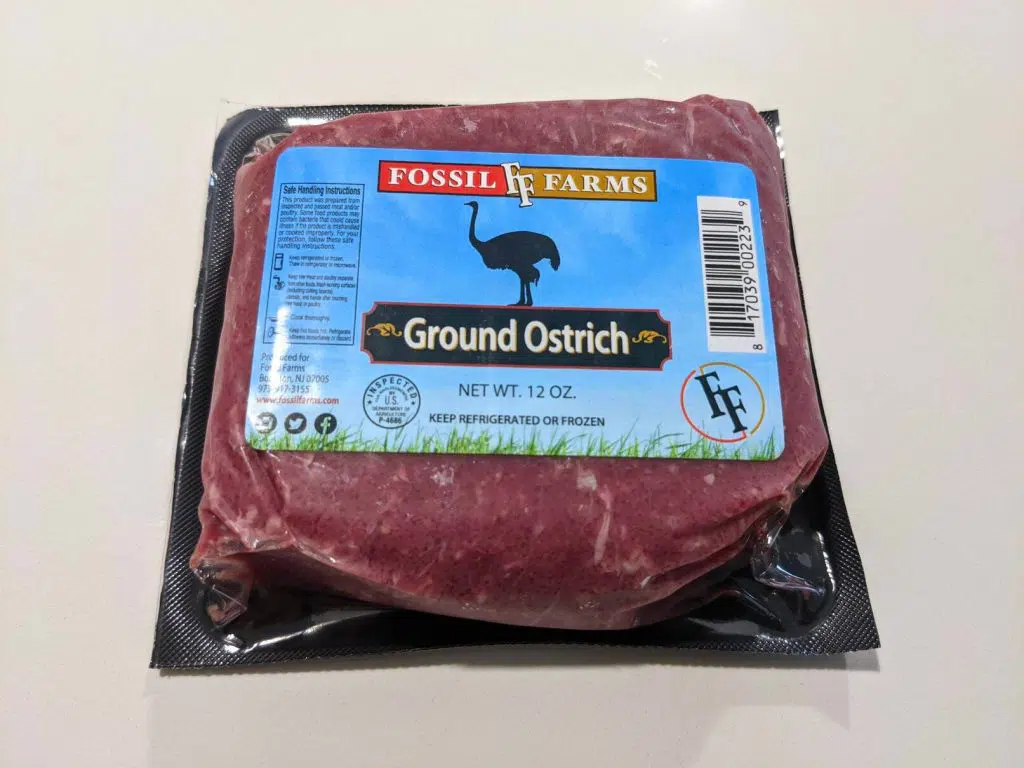
If you’re excited about ostrich meat and want to buy this protein source in a store near you, you’re probably out of luck. Most stores aren’t going to have this meat just yet. Supermarkets rarely have this item, even those devoted to more exotic things. Ostriches are simply not mainstream enough yet for the average meat buyer, meaning you need to go to online specialty shops to find great choices.
Thankfully, a growing number of these shops provide high-quality meat to people like you. We researched a few of the most popular on the market and found the best options for your overall needs. Note that these companies have not compensated us for including them here. Instead, we simply love how they operate and believe that they provide the best source of ostrich for your needs:
- Fossil Farms
- Wild Fork Foods
- Exotic Meat Markets
- Blackwing Meats
- American Ostrich Farms
- North Fork Bison
Each of these options either raises and butchers ostriches or can hook you up with a supply of meat. They’ll typically ship to most places across the country, though shipping prices may vary according to your proximity. Therefore, it is vital to find a few different places that you trust. And you must also pay attention to the price of this meat, as it is a little high compared to other options.
If you are looking for a quick shopping option, Wild Fork Foods is a favorite and it ships to almost every state nationwide in the United States.
Common Cuts and Costs
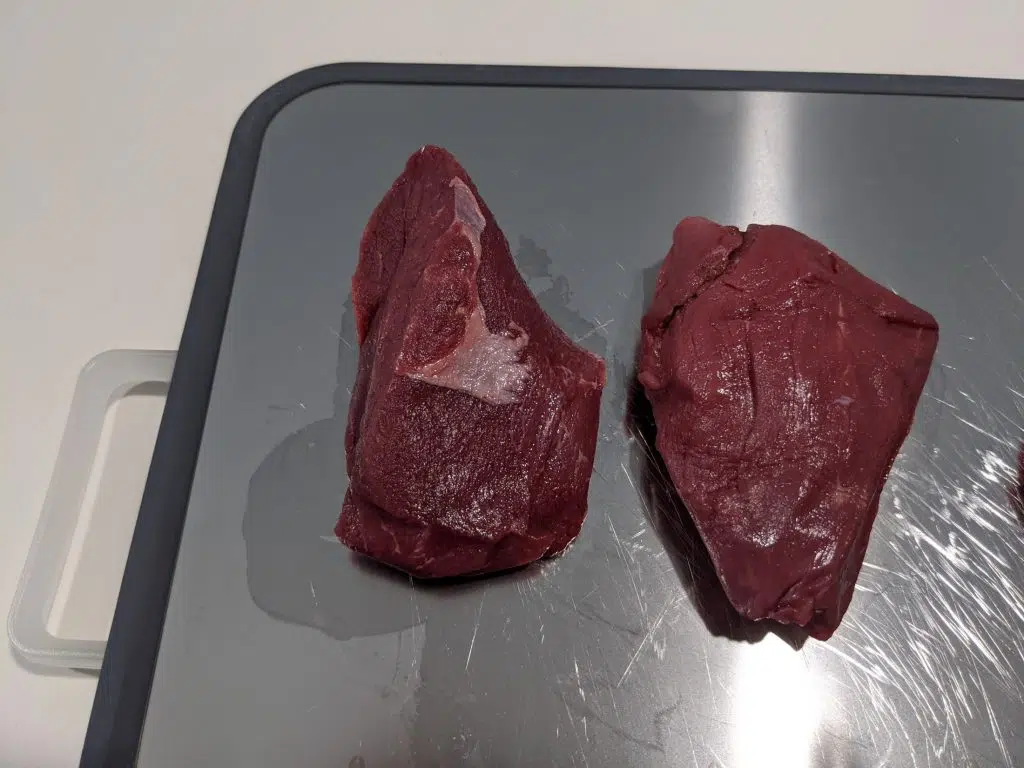
The most significant barrier to entry for the potential ostrich meat enthusiast is the cost. Currently, the prices are pretty high because licensing fees and other charges are so high. In addition, the rarity of ostrich meat also drives up its price. So, how much can you expect to pay per pound? We found around $32 or so on average.
That’s per pound, frozen, which means a specific order will cost you around $320 (for 10 pounds). Naturally, that kind of high price is going to deter some people from trying out ostrich meat. However, there are lower-cost options, depending on your proximity and the shop from which you buy.
As for cuts, you can expect many steaks, some legs, thighs, and backs. Unlike chickens and turkeys, you will not get breast meat from an ostrich. However, most of the rest of the cuts are similar to these birds, making it relatively easy to find an option that feels right for your taste.
Cooking Ostrich Meat
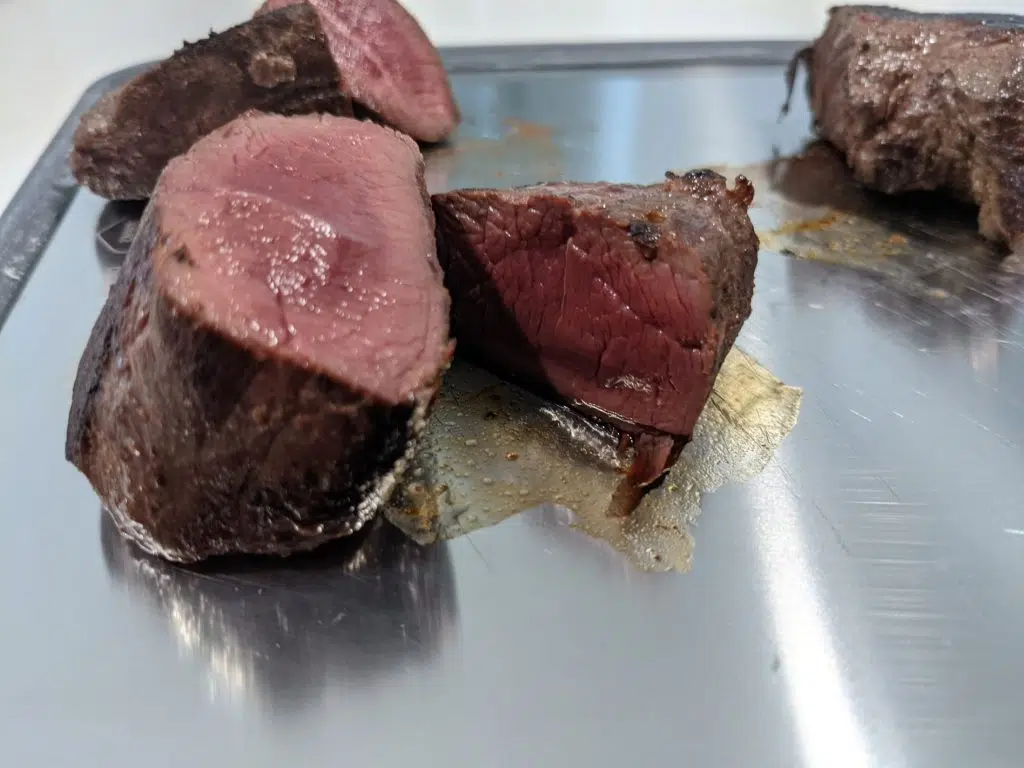
There’s not a lot of difference between cooking ostrich meat and most other lean steaks. However, it would help if you prepared for shrinkage from any ostrich you cook. This meat is so lean that it naturally becomes smaller while you cook. So try to cut a little bigger than you want to eat before cooking.
And this leanness also makes it easier for ostrich to absorb flavors from various marinades. As a result, you don’t have to marinade nearly as long or with as much when you cook. You could probably cut your spices and marinade sauces by half from what you’d use with beef and chicken.
Make sure to cook to a temperature of at least 150 degrees Fahrenheit to get a medium ostrich streak. And if you like rare, shoot for about 125 degrees Fahrenheit. Your steak will be very red even when cooked well due to its high iron content. When pan cooking, shoot for two and one-half minutes per side. Check out our recipe for cooking ostrich fillets specifically here.
How to Store Ostrich Meat
Fresh beef stores well for about four days in the fridge before it starts to go bad loses its flavor and nutrients. Ostrich meat just doesn’t have this problem. You can refrigerate it for several weeks or more in the fridge and can freeze it for 90 days or more without any freezer burn.
This is a significant benefit if you plan to buy a large amount of ostrich and slowly eat it over an extended period. And you might need to keep it this long, too, because typical orders for this meat can be several pounds at a time. Even better, small and lean slices of ostrich can last you a lot longer than bigger pieces of beef.
Try Ostrich Meat Today
As you can see, there are many unique advantages to buying and eating ostrich meat. While it might not be to all tastes and preferences, it can provide a unique alternative to beef and other similar meats. That makes it worth trying if you’re curious about new sources of protein, want to improve your health or care about the state of the environment.
